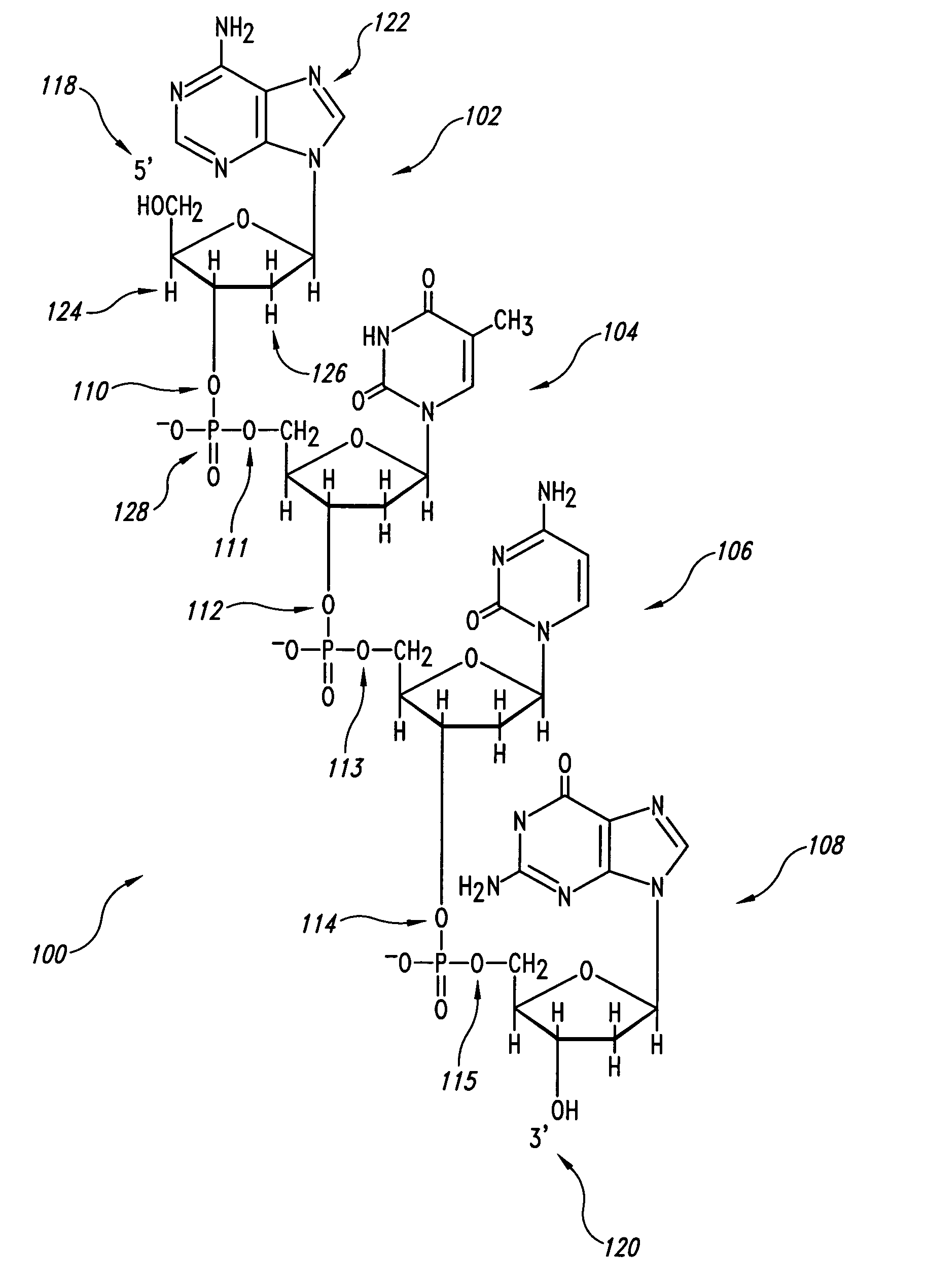Method and system for automated outlying feature and outlying feature background detection during processing of data scanned from a molecular array
a molecular array and background detection technology, applied in the field of processing data scanned from a molecular array, can solve the problems of purine base pairs destabilizing dna duplexes, defects in the preparation of molecular arrays, and non-uniform distribution of signal intensities
- Summary
- Abstract
- Description
- Claims
- Application Information
AI Technical Summary
Benefits of technology
Problems solved by technology
Method used
Image
Examples
Embodiment Construction
[0027]The present invention is directed to identifying outlier features and outlier feature backgrounds within scanned images of molecular arrays. The variance of signal intensities within a feature or feature background is compared to a maximum allowable variance calculated based on a variance model in order to determine whether or not the region of a scanned image of a molecular array corresponding to a feature or feature background contains adequately uniform pixel-based signal intensities within. In the following, a description of the variance model and the fundamental statistical concepts and distributions on which it is based is provided with reference to FIGS. 9A–C and a number of mathematical formulas. Following this discussion, a C++-like pseudocode implementation of automated outlier detection functionality that may be embedded within a molecular-array data processing system is provided as a described embodiment of the present invention.
[0028]Data processing techniques emp...
PUM
 Login to View More
Login to View More Abstract
Description
Claims
Application Information
 Login to View More
Login to View More - R&D
- Intellectual Property
- Life Sciences
- Materials
- Tech Scout
- Unparalleled Data Quality
- Higher Quality Content
- 60% Fewer Hallucinations
Browse by: Latest US Patents, China's latest patents, Technical Efficacy Thesaurus, Application Domain, Technology Topic, Popular Technical Reports.
© 2025 PatSnap. All rights reserved.Legal|Privacy policy|Modern Slavery Act Transparency Statement|Sitemap|About US| Contact US: help@patsnap.com



